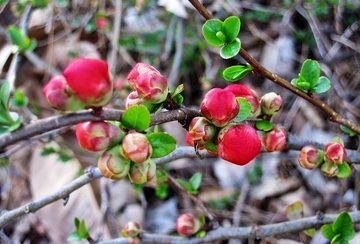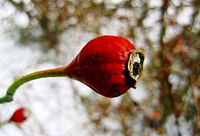
Spring

After the early display of warm yellow crocuses and daffodils, the garden switches to cool hues.
It's astonishing how many spring flowers come in purple. It's as if the whole of creation allows no other bloom color.
Hyacinths, scillas, pansies, betony, violets, dame's rocket, grape hyacinths, dead nettles, giant alliums, wild geraniums, lavender, sage, lilac, clematis, and irises fill the world with purple gradients, which last for nearly two months.
While the summer perennials expand in size, growing taller every year, the delicate spring flowers stay close to the ground, seldom exceeding six inches in height, and instead choose to spread out and form vibrant carpets, creating a flowing watercolor effect throughout the landscape.

Summer

Nature is at the peak of its glory in summer, basking in exuberance and excess. The summer season bursts with vibrant colors, especially fiery hues and neon shades, intensified by the midday sun.
From fuchsia zinnias and orange daylilies to pink roses and red Bristol flowers, phosphorescent white daisies, brilliant sky blue delphiniums, purple phlox, fiery lantanas, cheerful marigolds, dark dahlias, and yellow sunflowers - there is an overabundance of colors.
The unique allure of the summer garden stems from its mismatched blend of hues, which render color themes unnecessary.
However, those who prefer more formal landscape designs will recognize the purple, white and orange combinations that grace almost every public space, usually a mix of daylilies, daisies and Russian sage, as the quintessential theme of summer.
